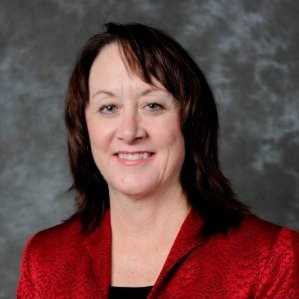Connecting with Dry Eye Patients of Every Generation

Cathi Lyons
Administrator at Gordon Schanzlin New Vision Institute, A TLC Laser Eye Center
Greater San Diego Area
Cathi Lyons, administrator for Gordon Schanzlin New Vision Institute, a TLC Laser Eye Center, has some tips to help you connect with dry eye patients of every generation.

For some patients, increased screen usage may be causing them to blink less, leading them to experience dry eye symptoms. Patients may also have dry eye after surgery or with certain medical conditions. With so many different causes, it’s no surprise patients of all ages are seeking treatment for dry eye disease.
Make education a team effort.
Lyons recommends involving your entire staff in dry eye education. Everyone should be well-prepared to help patients understand what may be causing their symptoms, as well as their role in treating the condition.
TIP: “We want to make sure everyone from the people who answer the phones, to technicians, to Patient Care Coordinators are educated on dry eye, so no one is surprised when somebody asks about it,” said Lyons.
Your website is another effective way to connect with patients searching for information about dry eye. Be sure to include symptoms, causes and treatments so patients who are researching online can find you.
Understand their experience.
Not every generation is equally familiar with the causes of dry eye and available treatment options. Millennial patients may not connect symptoms such as eye fatigue to dry eyes. However, Baby Boomers may be familiar with medical conditions or changes in hormones that can cause the condition. By screening every patient, you can make the best recommendation to improve their situation.
TIP: We have all of our new patients fill out a SPEED questionnaire to find out what their potential level of frequency and severity for dry eye may (or may not) be,” said Lyons. “Everyone gets a number. We’ll do additional testing at the consultation for patients who receive a score indicating potential dryness concerns.”
Introduce financing options.
Financing options like the ones available with the CareCredit credit card can help bridge the gap between insurance coverage and the cost of treatment. For patients who would benefit from manual gland expression or Lipiflow®, they can use their CareCredit credit card to pay for repeat treatment in your practice.* “Most insurance will pay for dry eye exams because you’re going for a medical diagnosis,” Lyons said. “However, most patients pay for treatment out-of-pocket. The cost can keep some patients from complying with their treatment plan.”TIP: The CareCredit credit card with special financing options* can also be used to pay for expenses that may not be covered by their insurance. It’s a payment solution that can help patients fit treatment into their budget.
Whether patients experience dry eye from screen usage, after surgery or because of a medical condition, incorporating education about the condition and financing options to help pay for treatment could help patients of all ages find relief.
